Lying in the Mid-Atlantic and Northeastern region of the United States, the state of New York has a very diverse landscape and climate. The climate of the southern region of New York State is influenced by the Atlantic coastal plain, while the northern region is dominated by the climatic influence of the Appalachian mountain range.
Contents
- 1. London Plane Tree (platanus × acerifolia)
- 2. Little Leaf Linden (tilia cordata)
- 3. Sugar Maple (acer saccharum)
- 4. Green Ash (fraxinus)
- 5. Callery Pear (pyrus calleryana)
- 6. Red Maple (acer rubrum)
- 7. Honey Locust (gleditsia triacanthos)
- 8. Silver Maple (acer saccharinum)
- 9. Pin Oak (quercus palustris)
- 10. Maidenhair Tree (ginkgo biloba)
- 11. White Pine (pinus strobus)
- 12. Fir (abies)
- 13. Red Spruce (picea rubens)
- 14. Tulip Poplar (liriodendron tulipifera)
- 15. Magnolia (magnolia grandiflora)
- 16. American Hornbeam (carpinus caroliniana virginiana)
The state of New York has a large spectrum of elevations from sea level all the way up to 5,344 feet above sea level. Moreover, the mountainous regions of the north are bisected by the Hudson River, which feeds the meadows, forests, farms, and lakes found throughout the state.
The humid continental climate and diverse elevations of the region make the climate of New York State both humid and mild. Due to this, New York State is home to about 800,000 acres of forested area, 600,000 acres of which has been classified as reforestation areas to promote forest conservation.
This article will outline 16 of the most common trees in New York State, providing brief descriptions and photos for each one and explaining the characteristics that define them. So let’s get right into it.
1. London Plane Tree (platanus × acerifolia)
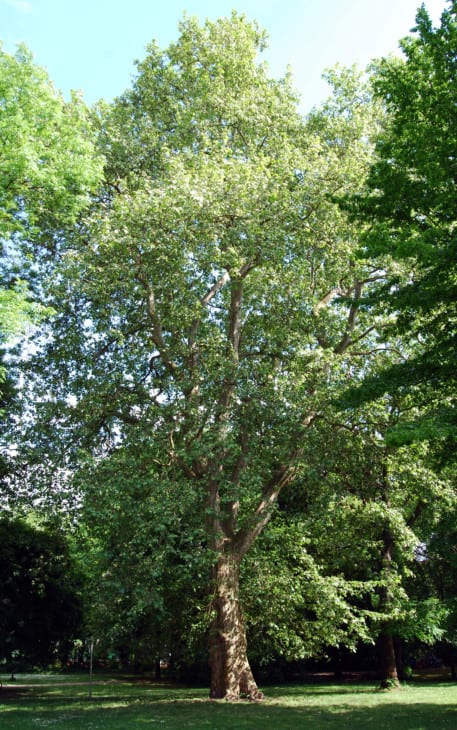
A tree of the genus Platanus, the London Plane Tree is a large deciduous tree that grows between 20 and 30 meters in height and 3 meters in trunk diameter. The bark of the London Plane tree is a pale grayish-green color while the leaves are thick, broad, and stiff, often resembling the leaves of a Maple tree.
Due to its high tolerance of root compaction and atmospheric pollution, the London Plane Tree is often used as an urban roadside tree. Moreover, it contributes to more than 10% of street trees in New York City.
2. Little Leaf Linden (tilia cordata)
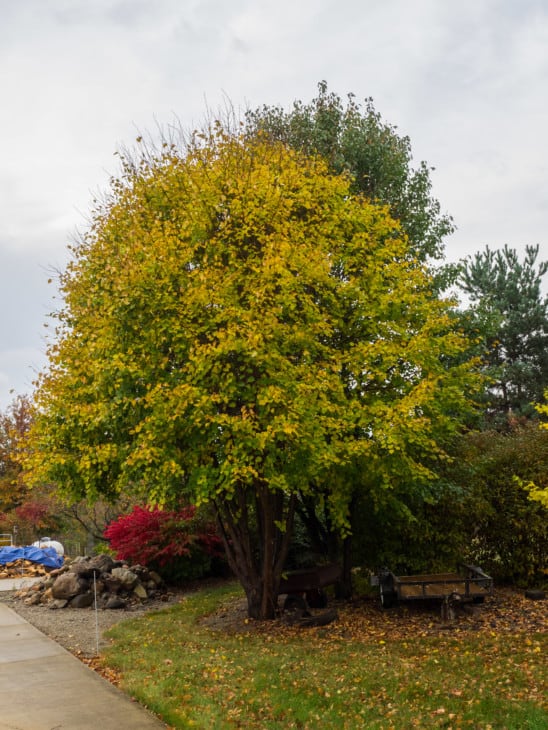
Native to most of Europe and of the tree family known as Malvaceace, the Little Leaf Linden is a tall deciduous tree, growing to heights of 20 to 40 meters and an average trunk diameter of 1 meter. Juvenile trees have smooth and grayish barks, while the mature trees form horizontal fissures and vertical ridges on the bark.
The Little Leaf Linden tree prefers loamy sites as well as sandy soils. While they are not very drought resistant they can withstand winter temperatures as low as -34°C. For this reason, it is widely used as an ornamental tree and can be found in the streets of various cities in Illinois, California, Massachusetts, Indiana, and Georgia.
3. Sugar Maple (acer saccharum)
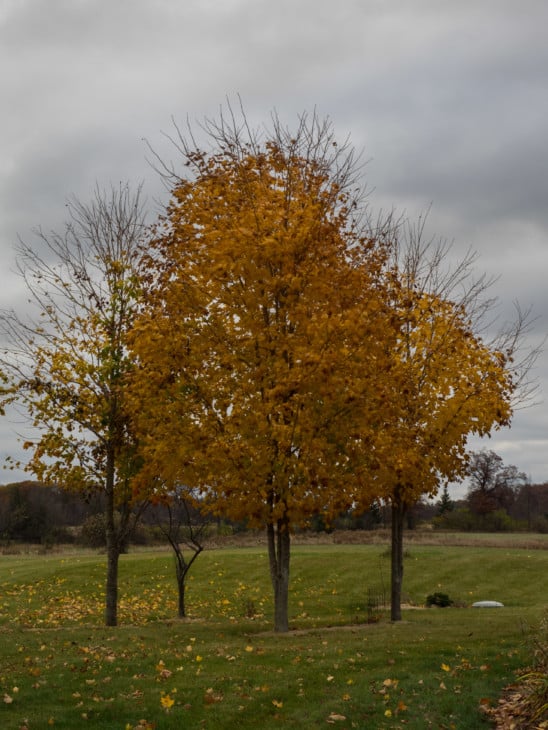
A species of flowering tree that is indigenous to the hardwood forests of Eastern Canada, the Sugar Maple is well known for its brightly colored foliage in the fall season. What’s more, the tree is the primary source of Maple syrup.
The Sugar Maple is a deciduous tree that reaches heights of up to 25 and 30 meters. Sugar Maples are vital for their surrounding ecology, due to their high tolerance for shade and many different types of soils. Lastly, the Sugar Maple is a very long living tree that can thrive in good conditions for up to 200 years, sometimes reaching close to 300 years.
4. Green Ash (fraxinus)
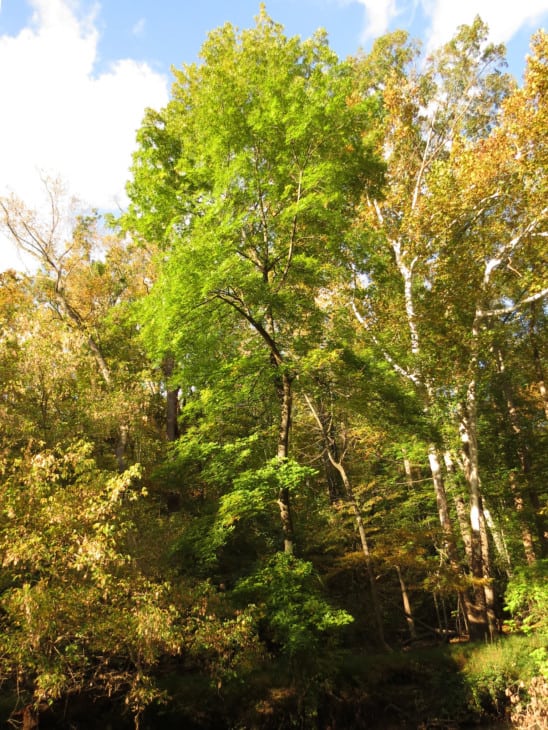
Indigenous to eastern and central North America, the Green Ash is from the family of Ash tree that has naturalized across much of the western United States. This medium-sized deciduous tree grows up to heights of 12 to 25 meters, with an average trunk diameter of 60 cm. Juvenile trees have smooth gray barks while the mature trees’ barks are thick and highly fissured.
The Green Ash tree thrives in stream sides and bottomlands, providing food to many kinds of wildlife through its large seeds. Lastly, large populations of Green Ash can be found in Florida, Oklahoma, Colorado, Texas, and New York State.
5. Callery Pear (pyrus calleryana)
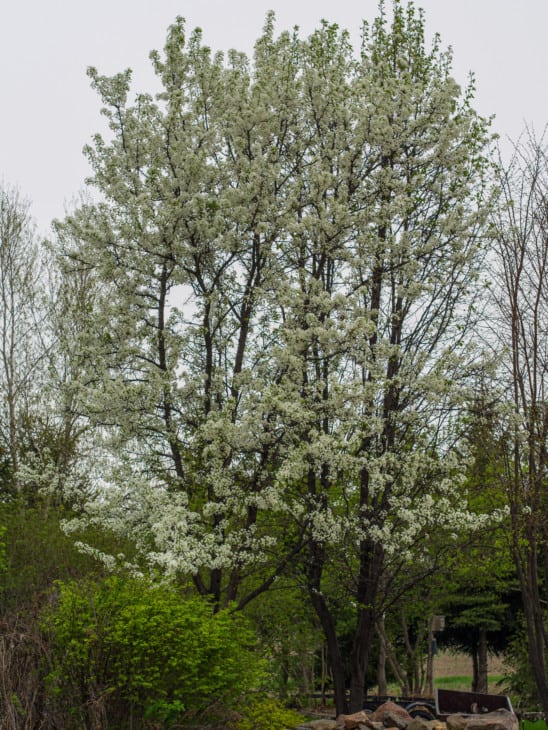
Indigenous to China and Vietnam, the Callery Pear is a species of the Pear tree and, although it is widely found in the United States, it is considered to be an invasive species throughout North America. This small deciduous tree grows to heights of 5 to 8 meters and has a conical crown.
Introduced to the United States as ornamental landscape trees in the 1960s, the Callery Pear outcompetes many native plants across Eastern and Midwestern North America. Lastly, these trees are highly resistant to disease but are susceptible to damage from storms, wind, and heavy rain.
6. Red Maple (acer rubrum)
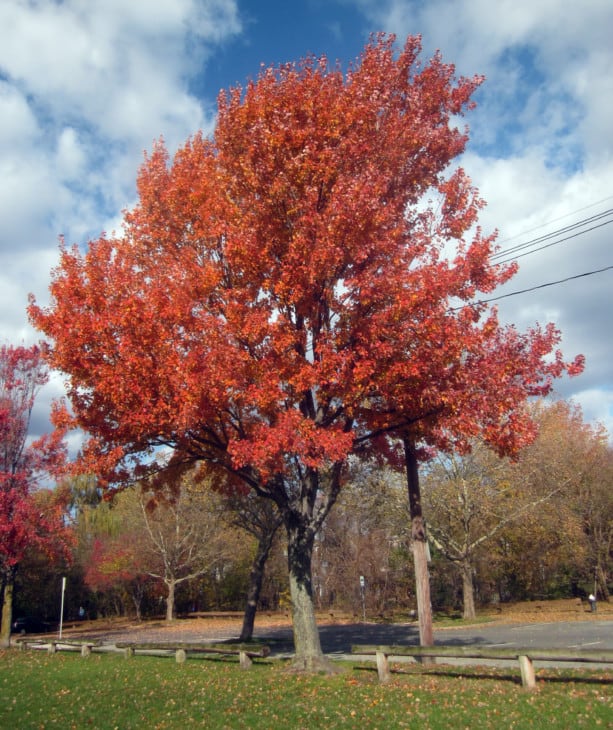
As one of the most prevalent species of deciduous tree in Eastern and Central North America, the Red Maple is known for the striking red color of its leaves, twigs, petioles, and flowers. This tree attains a height of 30 meters at maturity and thrives at elevations from sea level to 900 meters.
The Red Maple is very adaptable to a variety of environments, including swamplands, dry and shifting soils, and anywhere in between these two extremities.
7. Honey Locust (gleditsia triacanthos)
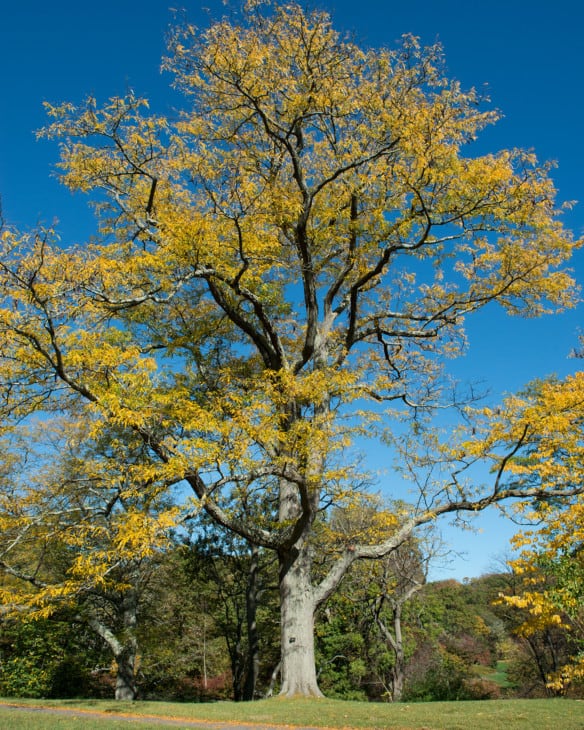
A deciduous tree in the family Fabaceae, the honey locust tree is indigenous to North America and can be found thriving in the moist soils of river valleys. This highly adaptable tree grows to heights of 20 meters and although they grow fast, they can live up to 120 years.
Due to its fast growth and adaptability, the Honey Locust is used across America as an ornamental tree and can often be found in parks, housing development areas, and on reclaimed land.
8. Silver Maple (acer saccharinum)
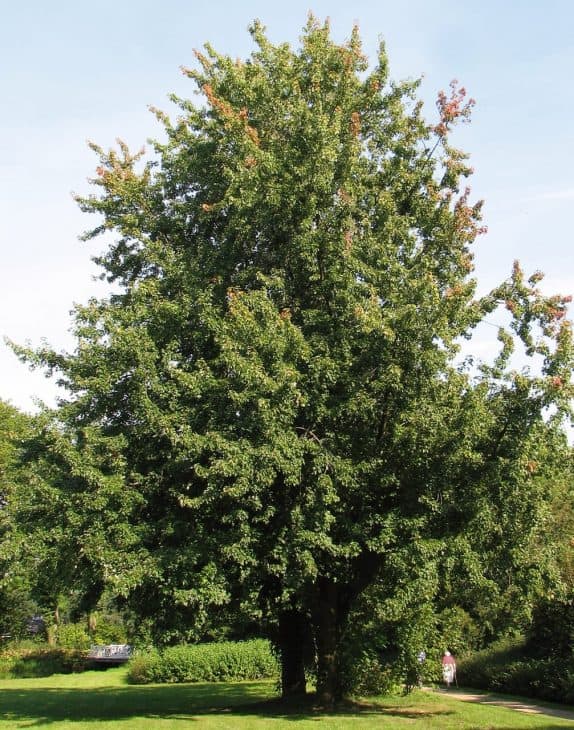
Indigenous to southeastern Canada and the Eastern United States, the Silver Maple has a silvery tinge to the underside of its green leaves and is known for its fast growth. The Silver Maple can grow up to 8 meters in the first ten years of its life, usually reaching heights of up to 25 to 30 meters in maturity.
Due to its fast growth and high tolerance to urban environments, the Silver Maple is often cultivated as an ornamental tree, although large populations can be found growing in wetlands areas as diverse as those of Florida and California.
9. Pin Oak (quercus palustris)
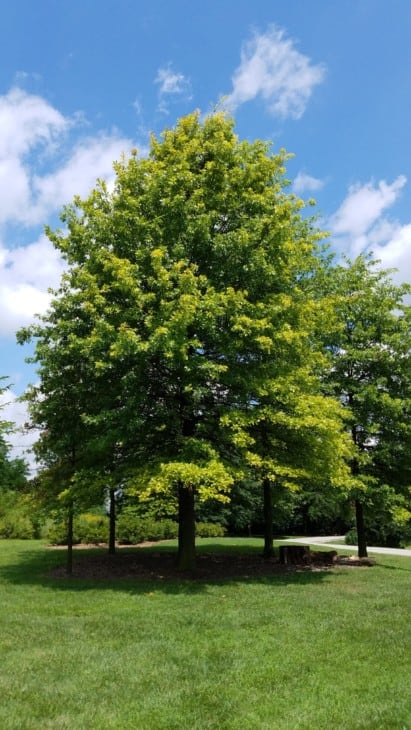
A tree of the genus Quercus, the Pin Oak is native to North America and is a common landscaping oak due to its fast growth, ease of transplant, and high tolerance to pollution. This medium-sized deciduous tree grows to heights of 18 to 22 meters with a 1-meter trunk diameter.
Thriving on level and poorly-drained floodplains, populations of Pin Oak can be found in Connecticut, Kansas, Oklahoma, Georgia, and New York State.
10. Maidenhair Tree (ginkgo biloba)
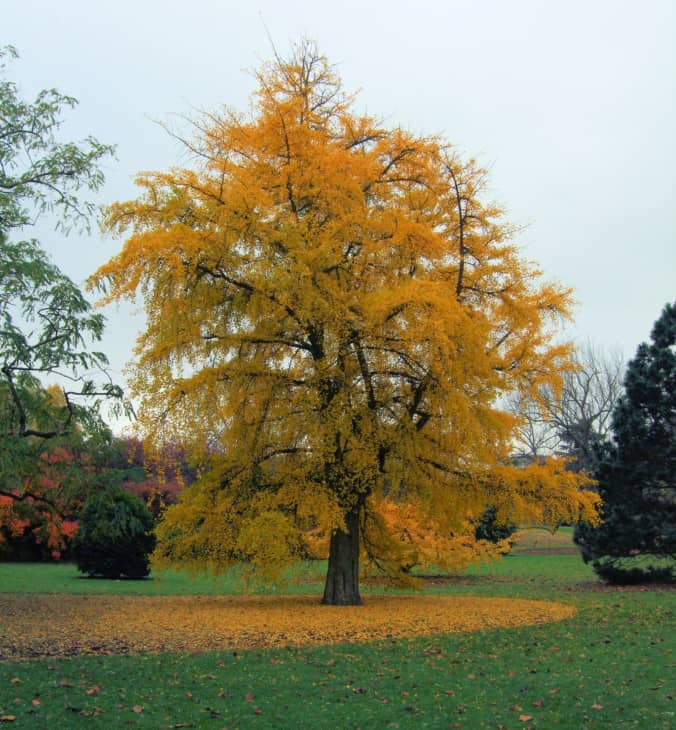
Native to China, the Maidenhair Tree is large with an angular crown and erratic branches and grows to heights of 20 to 35 meters. While juvenile maidenhairs are small and slender, mature trees have broad crowns with leaves that turn bright yellow in the Fall season.
Moreover, due to a combination of insect and disease resistant wood, and the ability to grow aerial roots, the Maidenhair tree is one of the longest growing trees, living for well over 1000 years in the right conditions.
11. White Pine (pinus strobus)
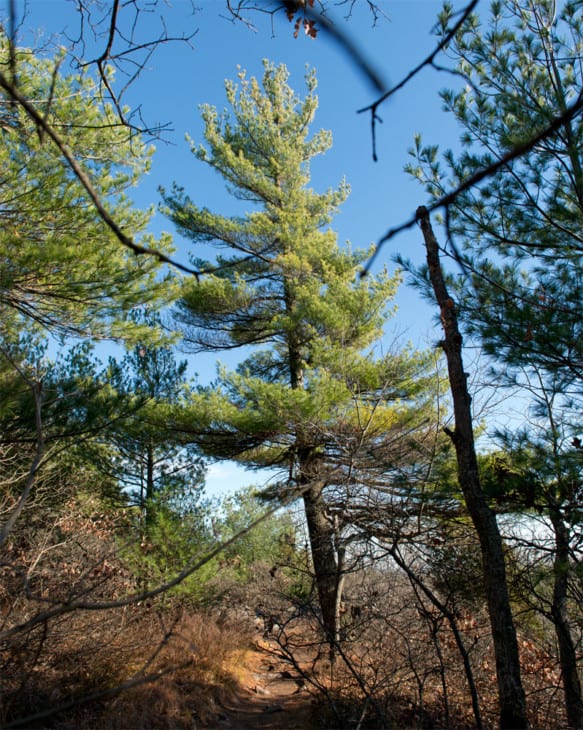
The White Pine is a species of pine tree indigenous to eastern North America. The tree thrives in well-drained soils and humid climates and has large populations in Manitoba, Georgia, and Alabama. The White Pine can grow as tall as 70 meters and can live for up to 250 years.
The needle-like coniferous leaves of the White Pine occur in bundles of 5 with a deciduous sheath over them. Lastly, the branches of this tree are widely spaced out along the trunk and tend to resemble a wagon-wheel formation.
12. Fir (abies)
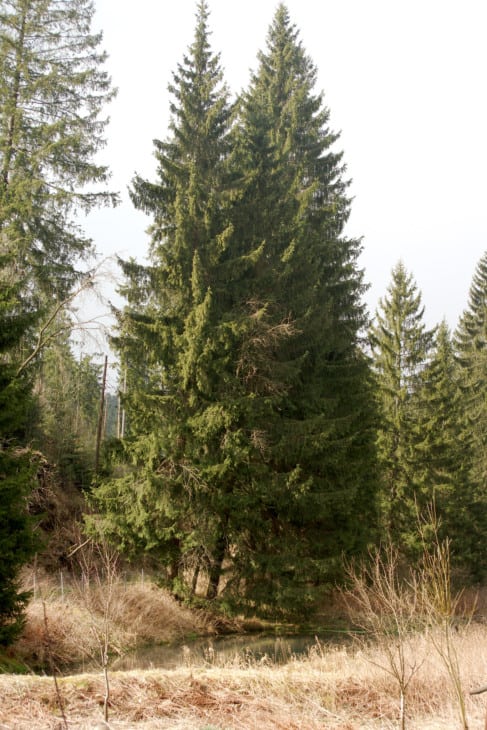
Part of the tree family Pinaceae, Firs is a genus of evergreen coniferous trees that are indigenous to North and Central America, although they can also be found in Europe and Asia. In the right conditions, Firs can grow up to 80 meters tall (although some trees in this genus are much smaller) with a 4-meter wide trunk diameter.
These trees can be distinguished from other Pine family members by the way their needle-like leaves are attached singly to the tree’s branches.
13. Red Spruce (picea rubens)
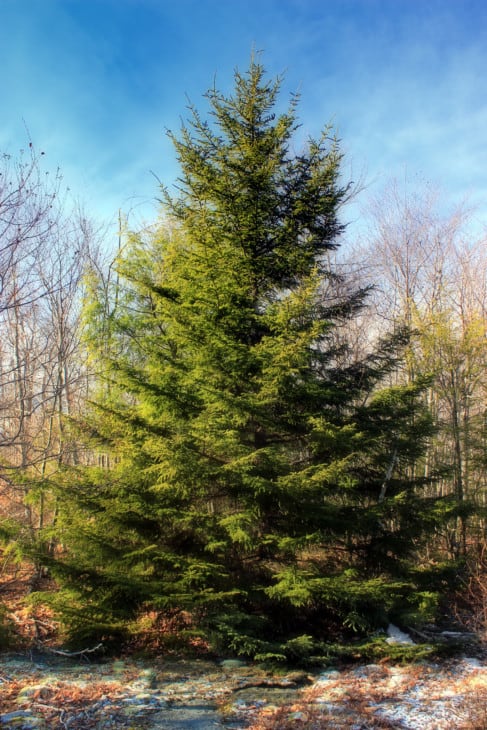
The Red Spruce is a species of spruce that is indigenous to North America and is a large shade-tolerant coniferous tree that grows to heights of up to 80 meters, with an average trunk diameter of 60 cm. This tree can be identified through its narrow, conical crown, and yellow-green, needle-like leaves that have a sharp point and extend from all sides of the twig.
Large populations of the Red Spruce can be found in New York State, Virginia, and North Carolina.
14. Tulip Poplar (liriodendron tulipifera)
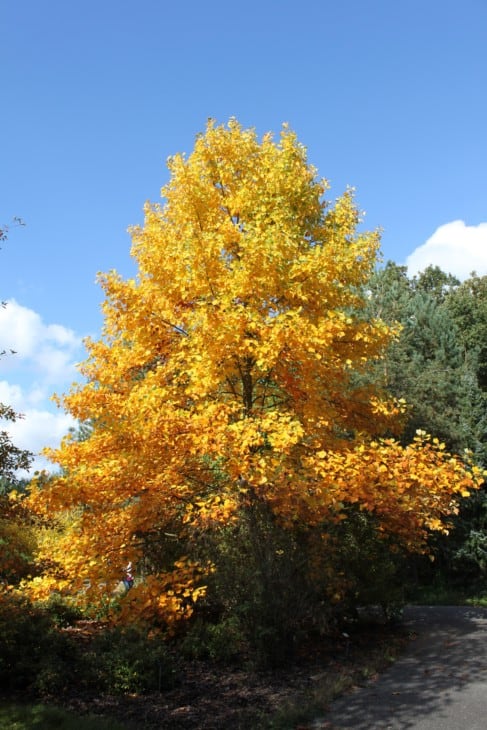
Also known as the American Tulip tree, the Tulip Poplar is indigenous to eastern North America. It is a very valuable source of timber due to its average 50-meter height and, more importantly, due to the fact that it does not grow any limbs before reaching 25 to 30 meters in height.
The Tulip poplar is a fast-growing tree with a short lifespan and is also known for its intolerance of shaded areas. Large populations of Tulip Poplar can be found in Illinois, Massachusetts, Rhode Island, and Florida, as well as Tennessee, Kentucky, and Indiana, where this species is a state tree.
15. Magnolia (magnolia grandiflora)
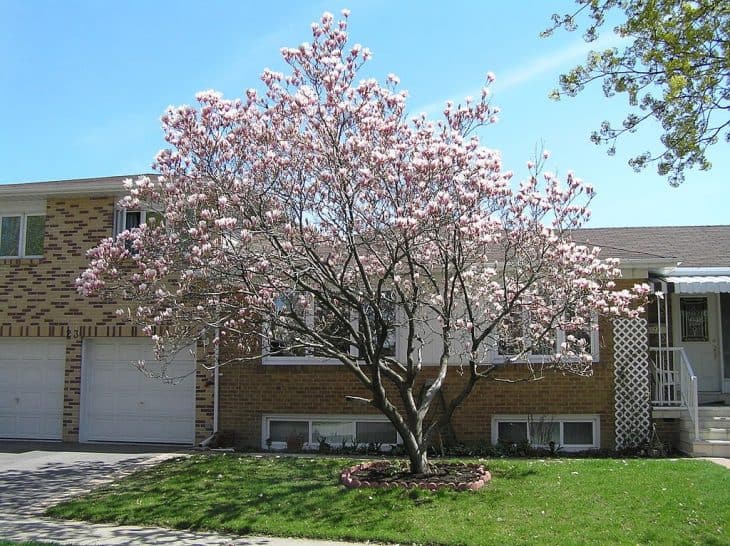
Part of the Magnoliaceae family can be found in eastern North America and Central America. These evergreen, deciduous trees or shrubs are characterized by large bowl-shaped and highly fragrant flowers that occur in shades of white, pink, purple-green, and yellow.
Other than attracting horticultural interests, culinary uses, and acting as a resource for timber, the Magnolia tree has traditionally been used as a medicinal plant in pre-modern times.
16. American Hornbeam (carpinus caroliniana virginiana)
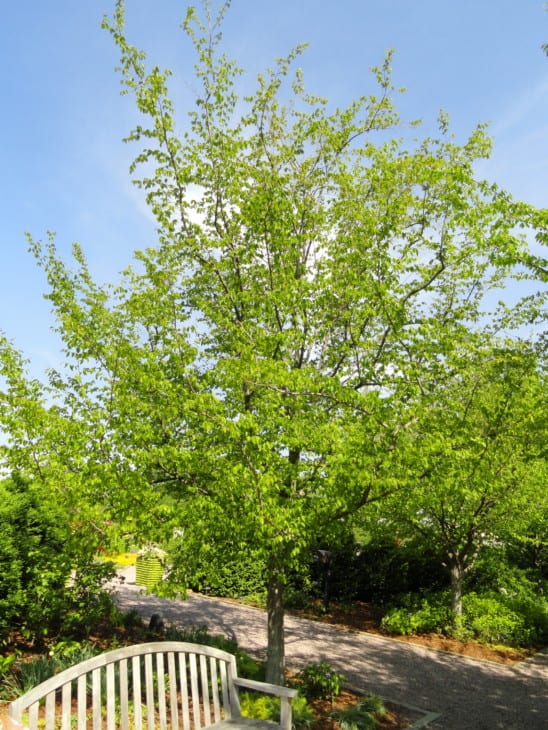
A small hardwood tree of the genus Carpinus, the American Hornbeam is indigenous to North America and can be found in Minnesota, Maine, Texas, Florida, and New York State. It thrives in shaded areas with moist soils and is typically found near rivers, swamps, or streams.
This small tree typically reaches heights of 10 to 15 meters and usually has a crooked trunk with a greenish-gray and fissured bark. Finally, the shallow and widely-spread root system of this tree makes it an essential feature of its ecology wherever it is found.







